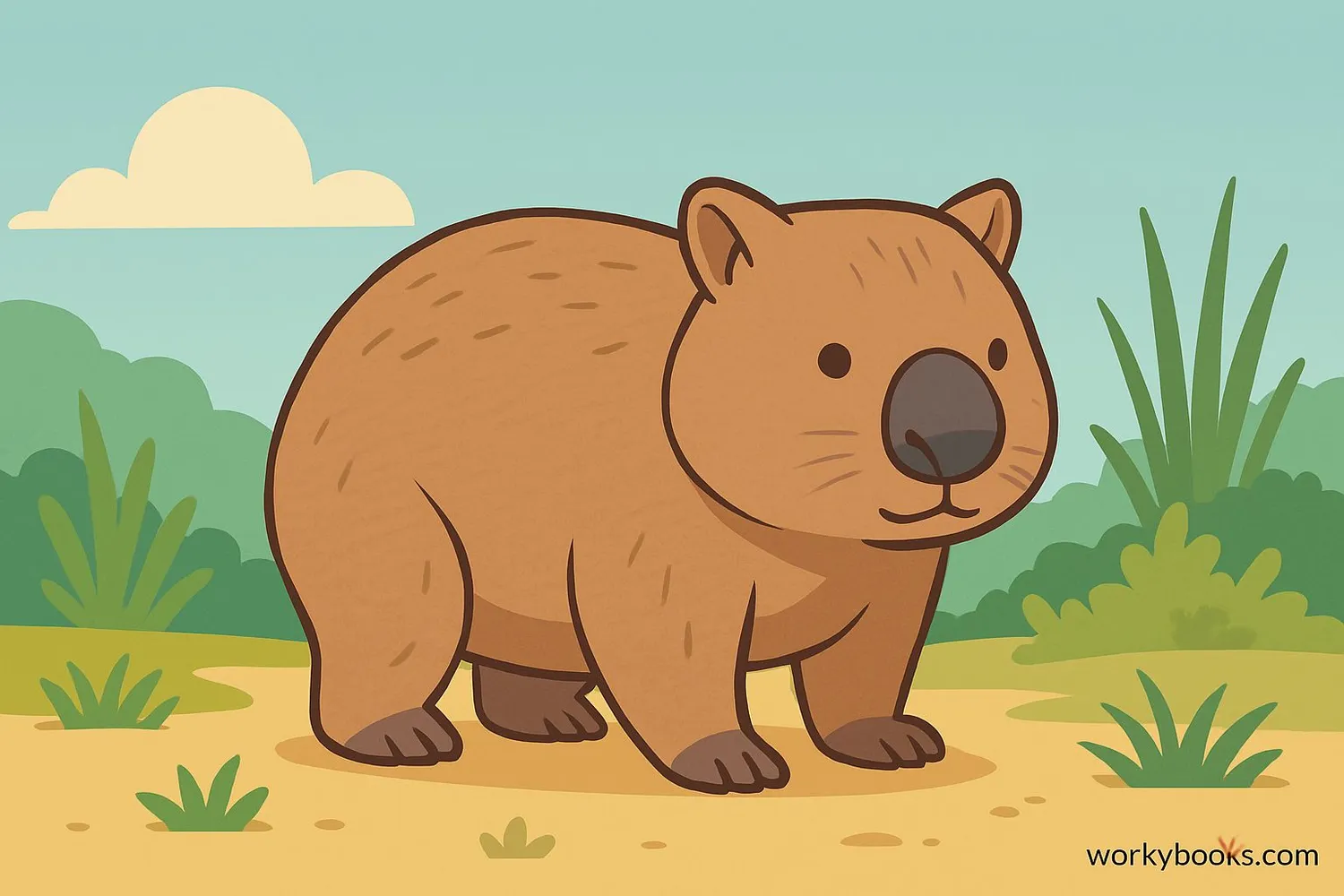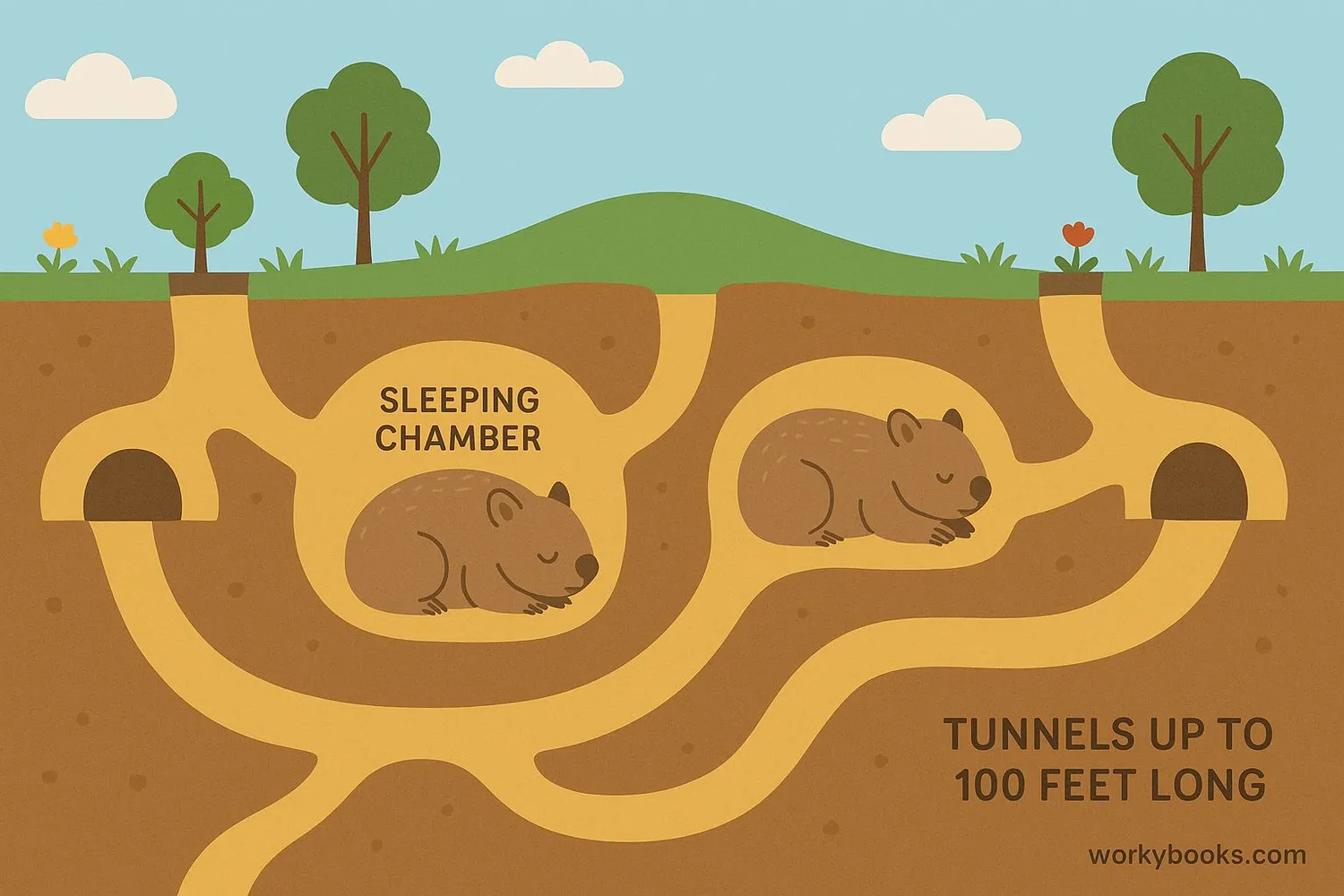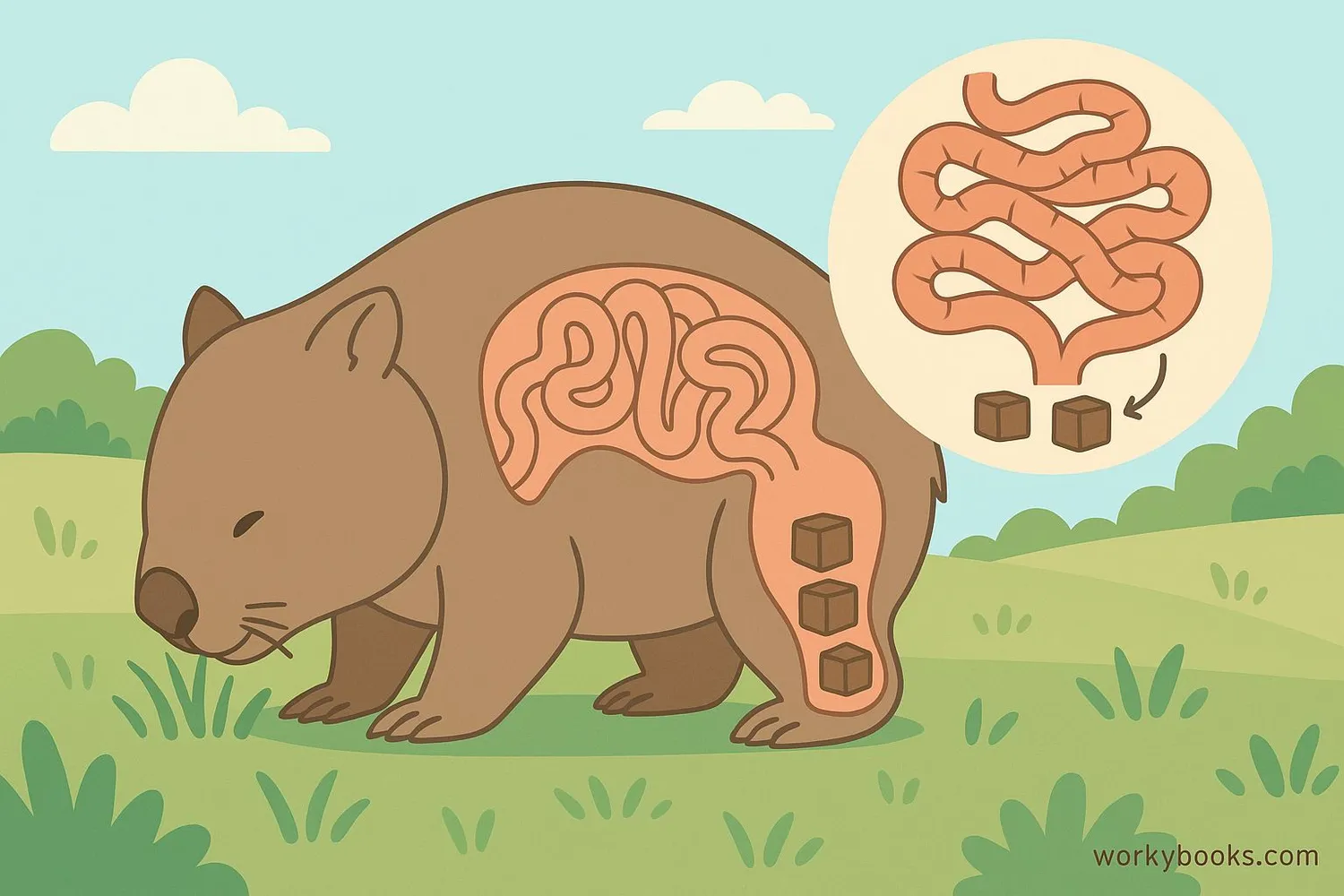Wombats - Definition, Examples, Quiz, FAQ, Trivia
Discover the fascinating world of wombats and their cube-shaped poop!
What is a Wombat?

Wombats are marsupials native to Australia, about the size of a small dog with a sturdy, barrel-shaped body and short legs. They're most famous for producing cube-shaped poop, which is unique in the animal kingdom!
There are three species of wombats:
• Common wombat (Vombatus ursinus)
• Southern hairy-nosed wombat (Lasiorhinus latifrons)
• Northern hairy-nosed wombat (Lasiorhinus krefftii)
Wombats are nocturnal, meaning they're most active at night. They have powerful claws for digging and can run surprisingly fast - up to 25 mph (40 km/h) for short distances!
Marsupial Fact!
Like kangaroos, wombats are marsupials. Baby wombats develop in their mother's pouch for about 6-7 months before emerging.
Wombat Habitat & Burrows

Wombats live in burrows they dig with their strong claws and powerful legs. These burrows can be quite extensive:
Burrow Length
Some burrows extend over 100 feet (30 meters) long
Multiple Entrances
Burrows often have several entrance/exit points
Sleeping Chambers
Special areas for resting and raising young
Temperature Control
Burrows stay cool in summer and warm in winter
Shared Burrows
Multiple wombats may use the same burrow system
Wombats are found in forested, mountainous, and heathland areas of southeast Australia and Tasmania. Their burrows help protect them from predators and extreme weather. A single wombat may have up to 12 burrows in its home range!
Burrow Defense!
When threatened, wombats dive headfirst into their burrows and can block the entrance with their tough rear end, which has extra-thick skin and cartilage.
Wombat Diet & Digestion

Wombats are herbivores, meaning they only eat plants. Their diet consists mainly of:
• Grasses
• Roots
• Shrubs
• Bark
• Mosses
They have special teeth that keep growing throughout their life to handle tough vegetation. Wombats spend about 3-8 hours each night grazing.
Cube-Shaped Poop
Unique among animals, wombats produce cube-shaped feces due to special intestinal structure
Slow Digestion
Food takes 8-14 days to pass through their system - one of the longest digestion times of any mammal
Water Efficient
Extremely efficient at conserving water, getting most of what they need from food
The cube-shaped poop serves an important purpose - it doesn't roll away! Wombats use their droppings to mark territory on rocks and logs. Scientists believe the cubes form because of how the wombat's intestines stretch and contract during digestion.
Wombat Quiz
Test your wombat knowledge with this quiz! Answer all 5 questions to see how much you've learned.
Frequently Asked Questions
Here are answers to some common questions about wombats:
Fun Wombat Facts
Discover some amazing facts about wombats!
Poop Pioneers
Wombats are the only known animals that produce naturally cube-shaped feces. Scientists study their digestive systems for potential applications in manufacturing and materials science.
Heavyweight Diggers
An adult wombat can weigh between 44-77 pounds (20-35 kg) - about the size of a medium dog - but can move up to 3 feet (1 meter) of dirt in a single night!
Ancient Relatives
Wombats' closest living relatives are koalas, but their ancient ancestors included the giant Diprotodon, which was the size of a rhinoceros and went extinct about 25,000 years ago.
Smart Adaptations
Wombats have backward-facing pouches so dirt doesn't get in while digging. Their teeth grow continuously to handle tough vegetation, and their metabolism is extremely slow to conserve energy.


